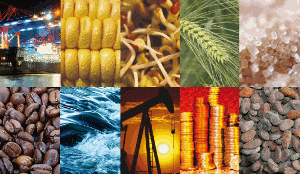Commodity exchange traded funds have rallied this year, with broad commodities on pace for their best quarter in over three decades, after Russia’s invasion of Ukraine and Western sanctions sent the rally across a number of raw materials into overdrive.
Year-to-date, the Invesco DB Optimum Yield Diversified Commodity Strategy Portfolio (NasdaqGM: PDBC) has advanced 25.5%.
The Russia-Ukraine war and Western sanctions on Moscow have thrown another wrench into global supply chain problems, reducing supply coming out of the Black Sea and fueling a surge in prices across a number of basic commodities like crude oil and nickel, the Wall Street Journal reports.
“Commodities are hot right now, but they are very volatile, and it’s hard to know when they run out of gas,” said Louise Goudy Willmering, partner with investment advisory services firm Crewe Advisors.
The S&P GSCI, a widely observed benchmark that tracks commodities futures from precious metals to livestock, has rallied 34% over the first quarter, on track for its biggest gain since 1990.
“When the supply and demand situation is tight and then you have another supply shock on top of that, it’s not surprising that prices spike even further,” Chris Burton, global head of commodities and portfolio manager at Credit Suisse Asset Management, told the WSJ.
- Tobias, Andrew (Author)
- English (Publication Language)
- 320 Pages - 04/19/2022 (Publication Date) - Harper...
- Reference Guide, Investment Lawyer's (Author)
- English (Publication Language)
- 46 Pages - 07/12/2019 (Publication Date) -...
U.S. Western Texas Intermediate crude oil futures broke above $120 per barrel, and the global Brent crude benchmark crossed over $130 per barrel in early March, hitting their highest levels since the 2008 financial crisis.
The latest rally in the commodities market has extended last year’s rebound, which was largely driven by a surge of pent-up consumer demand for goods and services when the economy finally reopened after the COVID-19 lockdowns, along with the tightening global supply and bad weather.
“They [commodities] probably have some investors taking a second look: ‘Should I be putting commodities back into my portfolio, given elevated inflation levels?’” Karim El Nokali, an investment strategist at Schroders, told the WSJ.
For more news, information, and strategy, visit the Innovative ETFs Channel.



